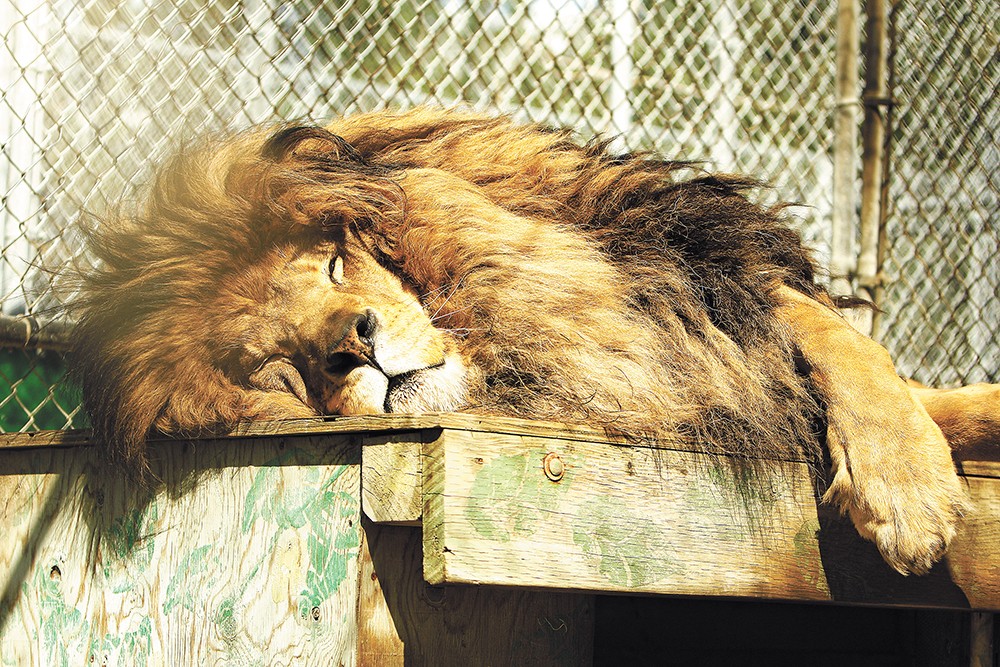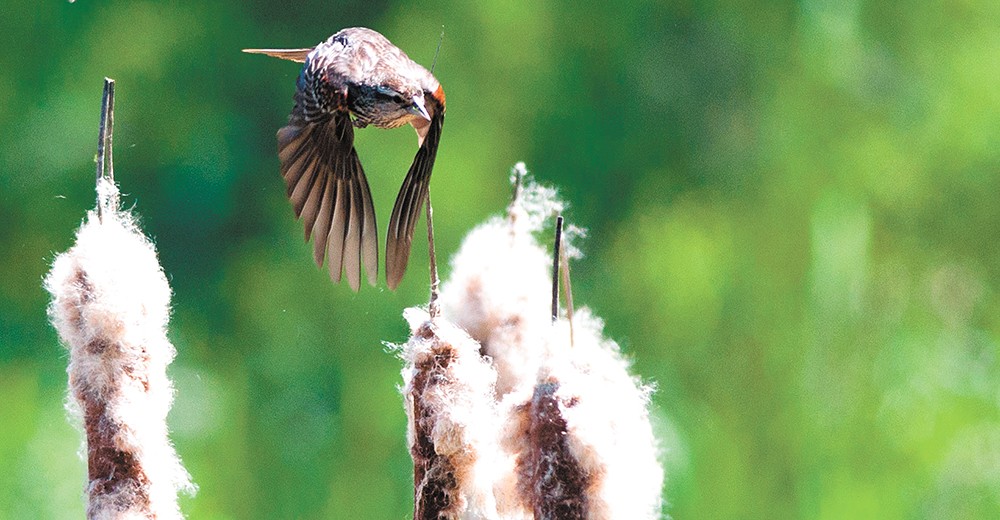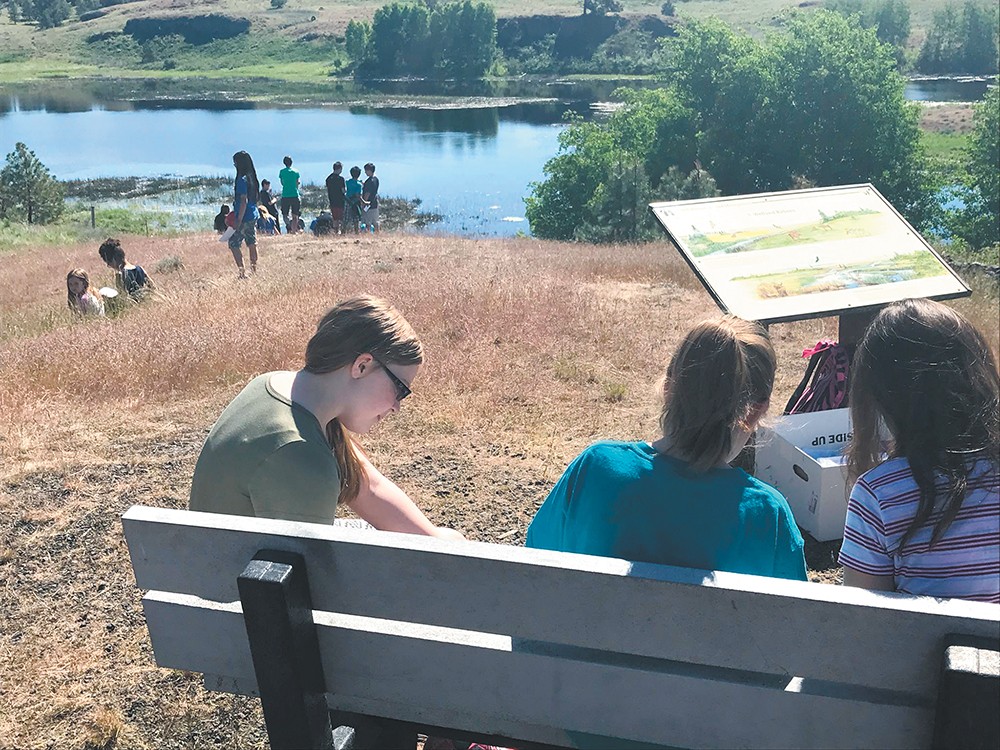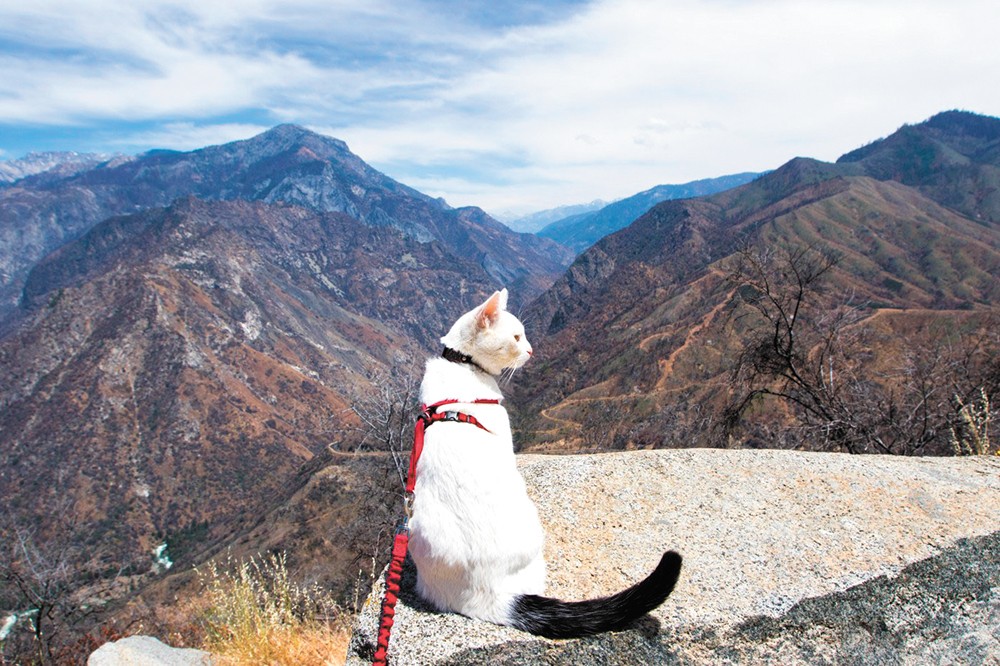Doggie Paddle
While pups around the Inland Northwest often log plenty of time splashing around local lakes and streams each year, an annual, not-to-miss tradition capping off the summer is the final days of municipal pool operations, with swim times just for canines. The city of Spokane Valley hosts Paws in the Pool on the afternoon of Sunday, Aug. 27 with sessions for big (66 pounds and over) and little dogs (65 pounds and under) at Valley Mission Pool. Entry is $5 per dog, but all four-legged participants must show proof of current vaccination records and be well-socialized with other dogs. For more information and to register for the event, head to spokanevalley.org/recreation.
Meanwhile, Spokane's Parks department offers its own version, the Doggie Dip, at five of the six city pools (Comstock, Shadle, Hillyard, Liberty and A.M. Cannon; not Witter) during the last evenings of summer operations, Aug. 27-31. The $10 entry for each event supports the operation of High Bridge Dog Park. Dogs who attend also need to bring proof of a current rabies vaccination. The Doggie Dip event schedule can be found at spokaneparks.org, and in the city's summer recreation guide.
Lions & Tigers & Bears, Oh My!
Pick any morning this summer (Tuesday through Saturday, 10 am-5 pm) before the heat of the day sets in and take a quick trip up to north Spokane County to visit the stunning big cats at local nonprofit rescue and sanctuary Cat Tales Zoological Park. Even if you've been up to see Cat Tales' big kitties in the past year or so, a fairly new arrival is waiting to meet you.
Nalin the 8-year-old Bengal white tiger came to Spokane earlier this year all the way from a California theme park to live a more peaceful existence at the sanctuary, which cares for unwanted pets, retired circus animals, injured wildlife and other exotic felines rescued from terrible circumstances. Regular admission to Cat Tales is $5 to $10, with free admission offered to seniors on Sundays, and always offered to disabled visitors and all active-duty military, law enforcement and firefighters.
All admission fees help keep the nonprofit park operating, and its residents fed and cared for. Find out more about Cat Tales and its (mostly) feline friends at cattales.org.
Where the Wild Things Are
We're lucky that there are so many places to experience the Inland Northwest's diverse wildlife ecology, whether it's watching those darn wild turkeys peck around in neighborhoods on the South Hill, or glimpsing a moose trekking through the woods on a hike just outside city limits.
One surefire way to see a wide variety of native animals (and plants) is to head southwest of town to the 18,217-acre Turnbull National Wildlife Refuge located outside of Cheney. Within the refuge's varied and distinct natural landscapes, carved out thousands of years ago during the last Ice Age floods, habitats include marshes, wetlands, pine forests and basalt outcroppings.
Among the many forms of animal life you may encounter are more than 200 species of birds, along with bats, elk, moose, cougar, badgers, beavers, reptiles, amphibians and, of course, insects. Visiting Turnbull is easy; it's open daily, year-round during daylight hours, and visits this time of year only cost $3 per car. Don't forget your sunscreen, a camera and suitable footwear! More information can be found at fws.gov/refuge/Turnbull.
Meet the Species
Get to know some of the Inland Northwest's most magnificent denizens of flight by visiting the West Valley Outdoor Learning Center, home to a sanctuary for rescued birds of prey. All of WVOLC's resident birds were rehabilitated from injuries that made it impossible for them to return to their wild homes. The owls and hawks now serve as species ambassadors to the public, charming those who encounter them during educational events and tours.
During the center's regularly scheduled open house events — the next is on Wed, July 19 from 10 am to noon — members of the public can meet birds like Alberta the Great Horned Owl and Sadie the American Kestrel, along with other animals living at the center. Beyond winged creatures, the center is also home to turtles and other reptiles. Kids' activities during open house days include science experiments and crafts. To attend the open house, the center asks visitors for a suggested $5 donation. The WVOLC is located at 8706 E. Upriver Drive in Spokane. For more information and updates on future events, visit facebook.com/westvalleyoutdoorlearningcenter.
While the Inland Northwest lacks zoos in the traditional sense, chances to meet unusual animals — like the aforementioned raptors — abound if you know where to look. One place to get up close with some large and furry quadrupeds is WinTur Bison Farm, northwest of Spokane in Springdale, Washington, where visitors can take tours, learn about the bison and even feed them. Tour hours are hosted during the summer on Friday through Sunday, at noon and 2 pm, with admission ranging from $5 to $6. Visit winturbisonfarm.com for details and directions.
In North Idaho, the H2H Bison Ranch in Worley offers similar encounters. On-site kitchen amenities allow guests the option ($16 to $20 per person) to enjoy a bison burger and sides for lunch after they tour the ranch and meet the herd. The ranch also is equipped to host private events and camping, with accommodations including RV hookups, cabins, teepees and tent camping. Find out more at h2hbisonranch.com.
Lend a Paw
Take your love of animals outside your own home, and become an active member in the emotionally fulfilling world of domestic animal rescue and sheltering, by signing up to volunteer at a local nonprofit of your choice. There are countless opportunities to spread your infinite love for all creatures great and small, whether you'd like to help a shelter dog release some pent-up energy on a walk every Friday, or you have the time and space to bottle-feed motherless kittens every two to three hours in your own home as a foster parent. The three largest sheltering organizations to look into — when making a choice that best fits your goals as a volunteer, consider minimum volunteer hours requested per month, physical location and the organization's mission statement — include the Spokane Humane Society (spokanehumanesociety.org), SpokAnimal (spokanimal.org) and SCRAPS (spokanecounty.org/scraps).
If cats and dogs aren't your companion animals of choice, many local groups work to rehabilitate and rehome other species — including horses, donkeys, pigs, chickens, ducks, geese and goats — which could use help with daily feedings and other care. Check out Higher Ground Animal Sanctuary (highergroundanimalsanctuary.org) and River's Wish Animal Sanctuary (riverswishanimalsanctuary.org), both located in semi-rural areas of Spokane County.
If your time this summer is tight but you still want to help, monetary donations of any amount are always appreciated by any animal rescue nonprofit, which use all available resources to maximize the number of lives saved.
If money's scarce too, there are other ways to help homeless or rescue animals. Get friends and family on board and go through your homes to purge stuff, then organize a yard sale to benefit an animal rescue or two. Make sure to prominently advertise on fliers and signs that your sale is all to help animals, so that fellow bleeding hearts turn out. Set up a donation jar, too, and even consider contacting the organization you'll be supporting to see if they can set you up with brochures, or even an adoptable pet to serve as brand ambassador. Everyone involved can feel good about supporting the cause!
Cat Camp #Goals
If you're a cat person worth the title, you best be following the incredible Instagram compendium
@adventurecatsorg. If not, get on that bandwagon right meow. Seriously, though; thanks to the insanely adorable photos and awe-inspiring landscape shots of intrepid, outdoorsy folks with their (leashed) feline companions in tow, taking your cat on hikes, camping or kayaking is not weird, or even rare, anymore.
Of course, cat camping is definitely not for every cat. Most outdoor-loving cat owners would rather not wake up with their tent shredded to infinity (or, worse — their cat gone) or have their pet bolt at the first sight of a dog or other animal on the trail. If your cat is of a calm, laid-back nature — meaning it doesn't flip out and hide when encountering new and unfamiliar experiences, people and environments — it could be a viable "adventure cat" candidate. But don't pack up your backpack and kitty just yet.
Safety and the cat's enjoyment of the situation should be at the top of your mind if you envision, or already have, a feline fit for the outdoor adventuring lifestyle. Some cats won't ever adapt, and are instead happy living solely indoors, or with only limited backyard access. Reaching outdoor adventuring success in some cats may require them to be introduced to the lifestyle starting as a kitten.
On adventurecats.org, the Adventure Cats Instagram's accompanying website, experts on the lifestyle share their safety tips and gear recommendations. There's so much to consider before you and your cat head out, like what harness to buy, getting your cat up to date on vaccines, flea and heartworm treatments, and making sure to pack essential items for your cat, like food, water and a first aid kit.
"You are responsible for your cat's health, safety and well-being, so don't ever put your feline friend in danger. If you have any qualms or second thoughts about whether your cat can participate in an activity, it's probably best to let your cat sit this one out and take a catnap safely at home," the website outlines. "Adventuring with a cat is all about improving a cat's quality of life — not lessening or shortening it."
Just last month, Adventure Cats' creators also released a printed guidebook on taking your cat into the great outdoors, called Adventure Cats: Living Nine Lives to the Fullest.
Just remember: Exploring the great outdoors with a cat is a complex, delicate balance. If it's something you'd like to try this summer, make sure to do your homework, and start out slow to keep both you and your feline companion safe and happy.♦





